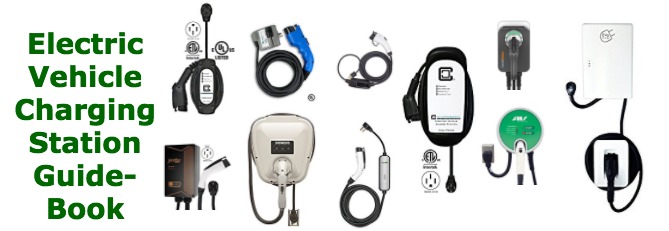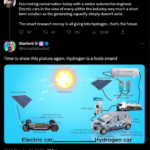Nissan today unveiled the Nissan LEAF, an affordable zero-emission electric car. It is an EV, not a hybrid car, meaning there is no engine, nor any of the other accoutrements associated with gasoline such as the gas tank and tail pipe. While it is an electric car, Nissan stresses that it is a zero emissions car. The goal is of course zero emissions, and it being an electric car is only one way to achieve zero emissions. (part 2: Range anxiety and the new Nissan LEAF EV, part 3: Technical specifications for the Nissan LEAF, part 4: Turning over the Nissan LEAF (to look inside))
It is a medium-size hatchback which comfortably seats five adults. It has a range of 100 miles, enough to satisfy many real world driving requirements. It has a maximum speed of 90 miles/hr, fast enough to get a speeding ticket in most places. Nissan expects the price to be competitive with any well-equipped sedan.
It is expected to be available during the 2010-2012 time frame. Production will be at their Smyrna TN plant, with a capacity of perhaps 50,000 vehicles per year. The pricing is expected to include battery pack purchase rather than a battery pack lease arrangement. The LEAF is not designed for use with the Project Better Place battery swap system.
Rather than simply converting an existing gasoline car design the LEAF is ground up optimized as an electric vehicle. For example the battery pack is located underneath the passenger compartment. This location has many positive features such contributing to a lower center of gravity, and leaving more room for the rear luggage compartment. It also gives the designers more flexibility in arranging the passenger compartment.
The innovations and eco-friendliness go beyond its being an EV. The aerodynamics are superb and they went so far as to design the headlights to redirect air flow away from the side-view mirrors. The headlights are LED bulbs that require just 10 percent of the electricity of conventional lighting. Many of the components are recyclable or made from recycled materials.
The power consumption is an eye popping 367 MPGe (equivalent) fuel economy. Obviously electrons don’t come in gallons and to help consumers make comparisons between miles per gallon and miles per kilowatt-hour the US Department of Energy has designed a conversion system (Code of Federal Regulations section 10 part 474) which Nissan used to derive this figure.
This looks to be a very promising electric vehicle with styling similar to many other mainstream cars on the market. This car is not one to stand out and scream ELECTRIC VEHICLE, and if that’s what you want look elsewhere.
- The USA should delete Musk from power, Instead of deleting whole agencies as he demands - February 14, 2025
- Elon Musk, fiduciary duties, his six companies PLUS his political activities - February 10, 2025
- Is there enough Grid Capacity for Hydrogen Fuel Cell or Battery Electric cars? - April 23, 2023
- Is Tesla finagling to grab federal NEVI dollars for Supercharger network? - November 15, 2022
- Tesla announces the North American Charging Standard charging connector - November 11, 2022
- Lightning Motorcycles adopts Silicon battery, 5 minute charge time gives 135 miles range - November 9, 2022
- Tesla Autopilot under US Dept of Transportation scrutiny - June 13, 2022
- Spectacular CNG bus fire misrepresented as EV bus fire - April 21, 2022
- Moldova, Ukraine, Georgia, Russia, and the European Energy Crisis - December 21, 2021
- Li-Bridge leading the USA across lithium battery chasm - October 29, 2021


















Pingback: Range anxiety and the new Nissan LEAF EV | The Long Tail Pipe
Pingback: Technical specifications for the 2011 Nissan LEAF | The Long Tail Pipe
Pingback: Turning over the Nissan LEAF (to look inside) | The Long Tail Pipe
Pingback: Renault (and Nissan) aiming to be leaders in electric cars | The Long Tail Pipe
Pingback: 230 MPG WTF: Looking at todays Volt announcement from GM | The Long Tail Pipe
Pingback: Raser Technologies and the 100 mpg Hummer, the latest with question-inducing miles per gallon claims | The Long Tail Pipe